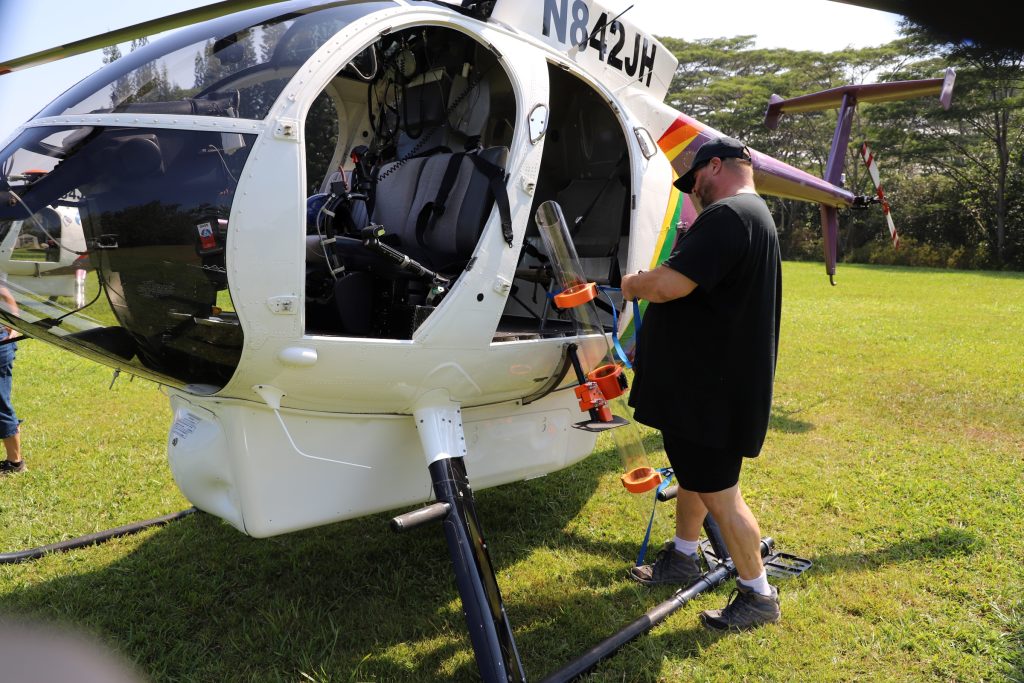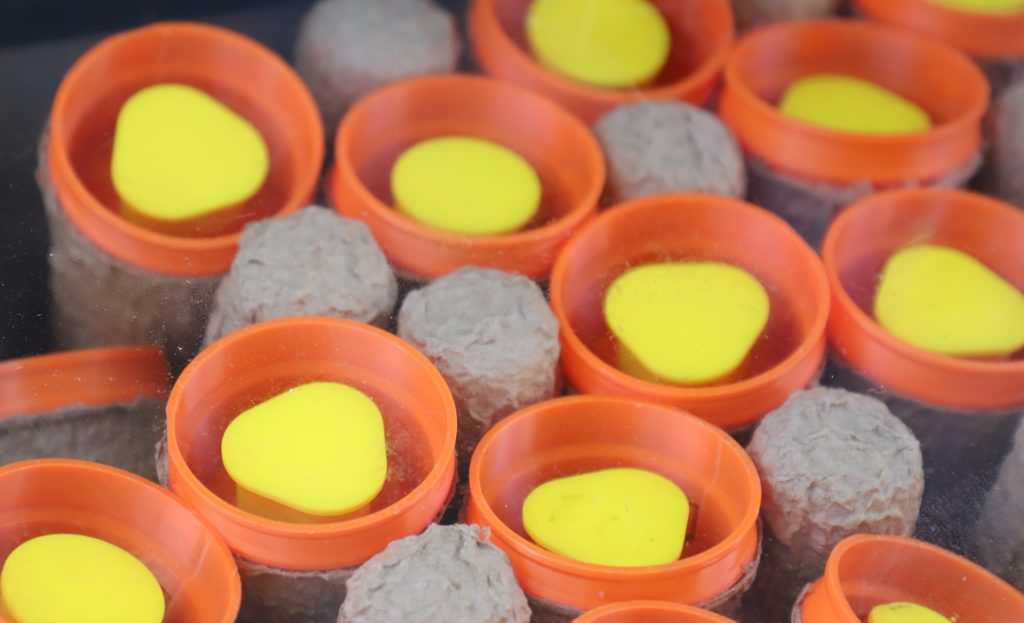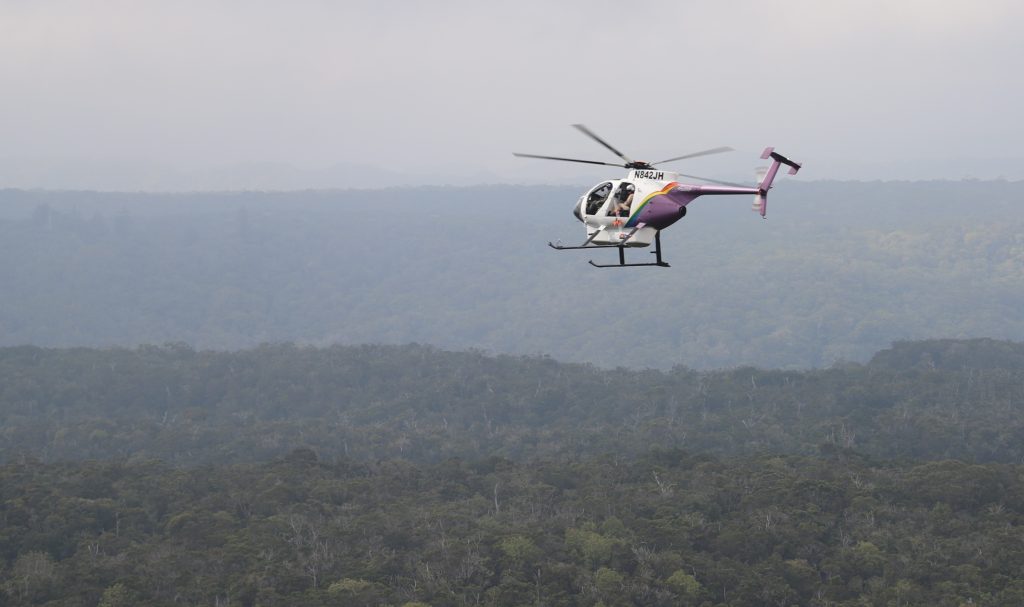Momentous milestone reached in fight against often-deadly avian malaria on Kauaʻi

It seems counterproductive, at the least, to release hundreds of thousands of 6-legged, flying harpoons into a place where a portion of their population is spreading a plague that has several species of native Hawaiian honeycreepers — some endemic only to Kaua‘i — fighting for their very existence.
It could be viewed as inhumane, careless, insensitive or even cruel, callous and cold-blooded as the forest birds face possible extinction because of the blood-sucking scourge.
Kaua‘i Forest Bird Recovery Project staff, however, heralded the first release of male mosquitoes into a state forest reserve on the Garden Isle’s vast Alakaʻi Plateau as a momentous milestone in the battle against avian malaria and efforts to save the birds that the often-deadly disease is essentially eradicating.
A decade — 10 years — of planning, permitting and community outreach by the recovery project team and its partners made the Feb. 13 disbursement of the insects possible.
The released males are reproductively incompatible with female mosquitoes.
Females are the only mosquitoes that bite — needing blood from humans or animals to develop their eggs — and therefore spread disease. Males don’t bite and get energy from feeding on plant juices such as nectar.
This mosquito “birth control” method called incompatible insect technology is used to suppress mosquito populations. It has been used successfully around the world, but mostly to combat human malaria.
This is the first time the technology has been deployed on Kaua‘i in an attempt to drastically reduce the number of malaria-carrying mosquitoes.
“We hope it will reduce the amount of avian malaria, which is driving the declines of native forest birds,” said Lisa “Cali” Crampton, who leads Kaua‘i Forest Bird Recovery Project. “It is a tried and true and safe technique that has been used hundreds of times.”
Half a million reproductively incompatible male mosquitoes will be loaded each week onto a helicopter in Califorina and flown to Kaua‘i in biodegradable cones that resemble an ice cream sugar cone.
Deployment helicopters are outfitted with a specially designed tube that directs each cone out of the bottom of the aircraft, after which they float to the ground where the insects are released.
“We do this twice a week to ensure there’s a very, very high likelihood that a wild female will encounter one of the incompatible males,” said Crampton. “We’re really trying to interrupt the reproductive cycle.”
She’s hopeful incompatible insect technology will be the tool that turns the tide in the fight against avian malaria. That sentiment is shared by Hawai‘i Department of Land and Natural Resources Division of Forestry and Wildlife planner Justin Hite.
He spent a decade leading Kaua‘i Forest Bird Recovery Project field teams into remote areas favored by forest bird species such as ‘akikiki and ‘akeke’e, two of the native honeycreepers with such low numbers it’s likely they will completely disappear from the wild in the next year or two.
“We hope this really moves the needle for these species.” said Hite about incompatible insect technology as he observed Thursday’s release.

Recovery project teams aren’t relying on one tool in their toolbox though; they’re employing what Crampton calls integrated pest management.
In addition to incompatible insect technology, Kaua‘i Forest Bird Recovery Project is using common larvicide BTi, which targets the larval phase of mosquitoes.
Incompatible insect technology targets the adult and egg production stages of a mosquito’s life cycle.
“So the idea is the BTi reduces populations of adult mosquitoes to begin with, making it more likely that females will encounter one of these incompatible males,” Crampton said.
BTi has been used on the ground for 9 years in forestland on the Alakaʻi Plateau. It also was applied by helicopter during the past year.
Kaua‘i Forest Bird Recovery Project also has an insurance policy in place for the continued existence of the most critically endangered birds on Kaua‘i: a conservation breeding program.
Crampton said it’s hoped that once incompatible insect technology and BTi are used together for a year or so throughout the best forest bird habitat, birds in the breeding programs — or their offspring — can one day be released into the wild with the menace that is avian malaria no longer a threat to their existence.









